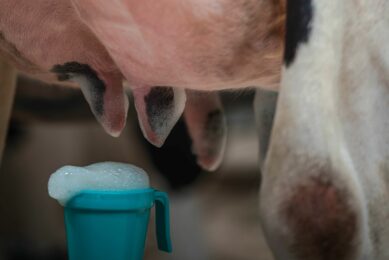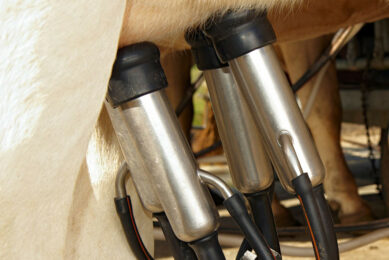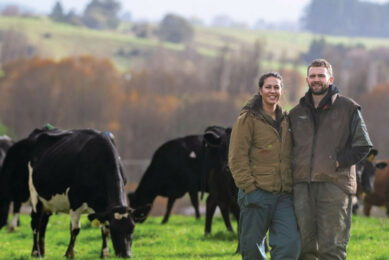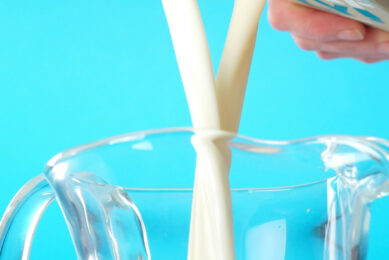Dairy farmers talk about the benefits of once-a-day milking
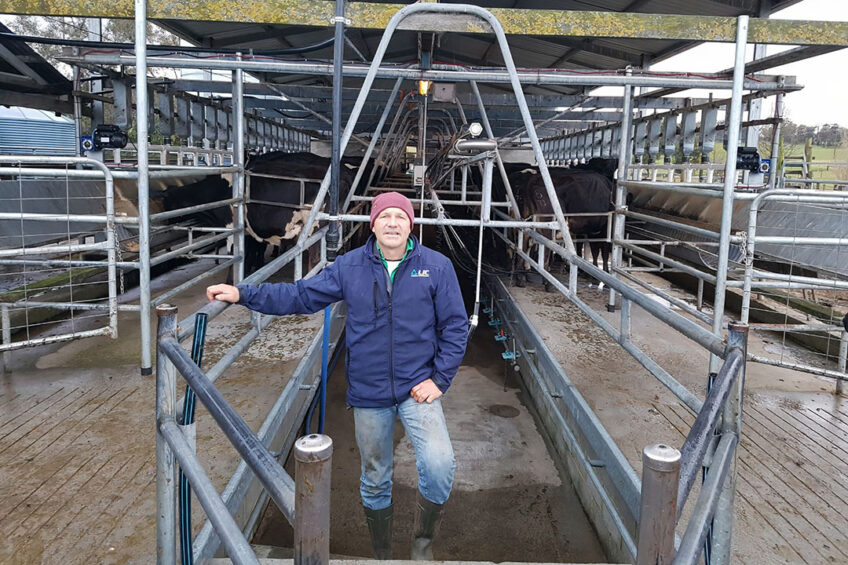
David and Narelle Macalister switched to once-a-day milking 7 years ago and have never looked back.
“If I had to milk twice a day, I don’t think we would be dairy farmers anymore,” David says.
The Macalister Farm is located in Orbost, East Gippsland in Victoria, Australia. David and Narelle occupy an area of about 300 acres (121 hectares). “Some of it is river flat and we have some hill country,” David says. “We have been here for 16 years. We purchased the neighbouring property 5 years ago.”
For 6-7 months a year, 86 acres (35 hectares) of river flat area is leased to a company growing sweetcorn seeds. “In the other months we grow a bit of silage for the dairy herd on that property,” David explains.
Once-a-day milking, cost saving
David and Narelle have 220 predominantly Jersey-Friesian-cross spring-calving cows, all milked once a day (OAD). Feeding is pasture-based. “And we feed about 1 kg of grain pellets in the dairy,” David says. “That’s a pretty low input of supplementary feed. Before we switched to OAD milking we were probably feeding each cow 3 kg each day, so it is a big cost saving.”
The Macalister farm is one of a growing number of farms that are switching to once-a-day milking in Gippsland. About 30 dairy farm businesses in Gippsland now practise OAD milking and interest is growing.
We don’t have such a high replacement rate. The conception rate has improved and we don’t have as many empty cows.
David and Narelle switched from milking twice a day to milking once a day about 7 years ago. “I wanted to balance my family life and milking cows,” David points out. “It was pretty hard milking twice a day, particularly with a young family. And the availability of labour was another issue. We found that by switching to once-a-day milking, we weren’t so reliant on labour. We still employ some casual labour but not as much as previously.”
Increase in stocking rate
Production has fallen a bit after David and Narelle switched to OAD milking. “We were not a high production herd originally,” says David. “But since the change production has fallen about 20%. We have set that off by a 10% increase in our stocking rate. We now milk more cows than we used to. Our cows now produce 350 kg of milk solids each per year, about 4000 litres per cow.”
OAD milking also saves on costs like maintenance. Cows are only walking to the dairy and back once a day.
The impact of once-a-day milking on cows
David says fewer underperforming cows have to be replaced each year, since the new milking method was introduced. “It actually took us a couple of years to sort out the cows that are actually suited to once-a-day milking. Since we have done that, we don’t have such a high replacement rate. The conception rate has improved and we don’t have as many empty cows.” The farm now has a 7-8% empty rate at 9 weeks and AI conception has been between 65% and 70%.
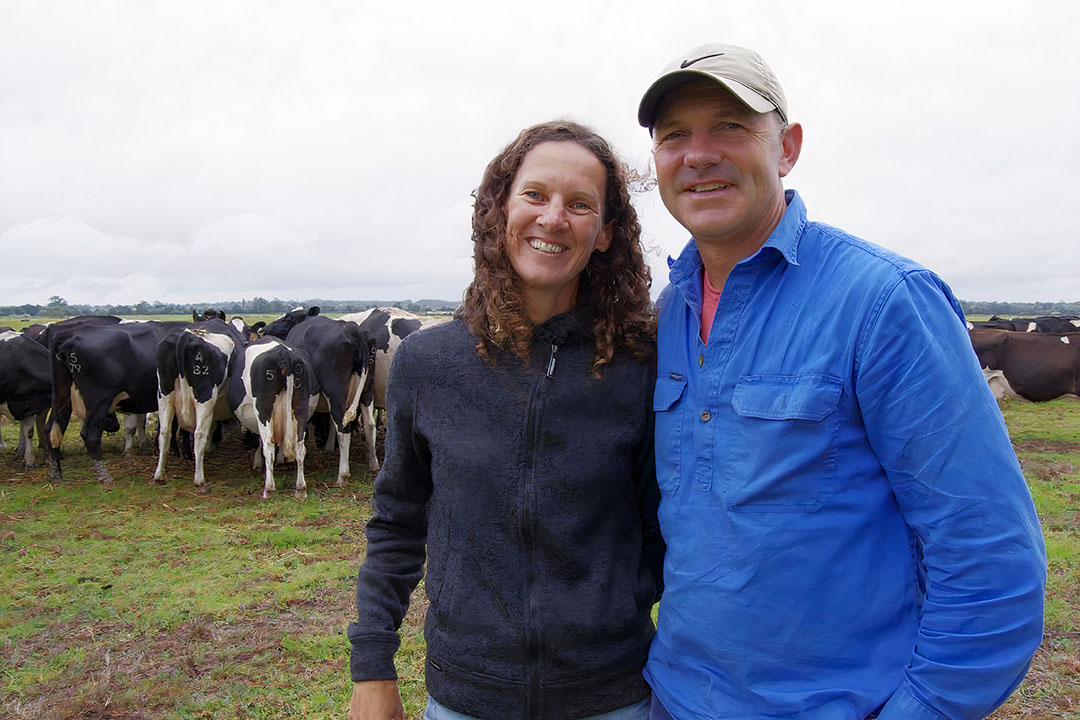
In general, David points out, the cows are under less pressure to produce. “And they really don’t have any feet problems from walking long distances. The cows are content and when seasonal conditions aren’t great, they keep a better condition. They are a bit heavier.”
OAD milking also saves on costs like maintenance. Cows are only walking to the dairy and back once a day. There’s less fence maintenance. “It’s all little bits and pieces,” David says. “Even the dairy does not suffer the same wear and tear. And I now have more time for maintenance and keeping things in better condition.”
David starts milking in the early morning. “We start at about 6 am,” he says. “I just like to get it out of the way so I can finish at a good time. Then I have the rest of the day to do other jobs. And I can have family time as well. I have my family commitments, especially on the weekends when our kids have their sports. When I have my milking done early in the morning, I have the rest of the day to do whatever I want.”
Profit rather than production
Even though the interest in OAD milking is growing, it is still an exception in Australia. David: “It’s far more common in New Zealand. In Australia, the industry is fixated on production at all cost. But our system is still profitable. Our focus is more on profit rather than production.”
David and Narelle are still happy with their choice for once-a-day milking. “If I had to milk twice a day, I don’t think we would be dairy farmers anymore,” David says.” Our business is so much easier to operate. For similar profits, why would you milk twice a day?”
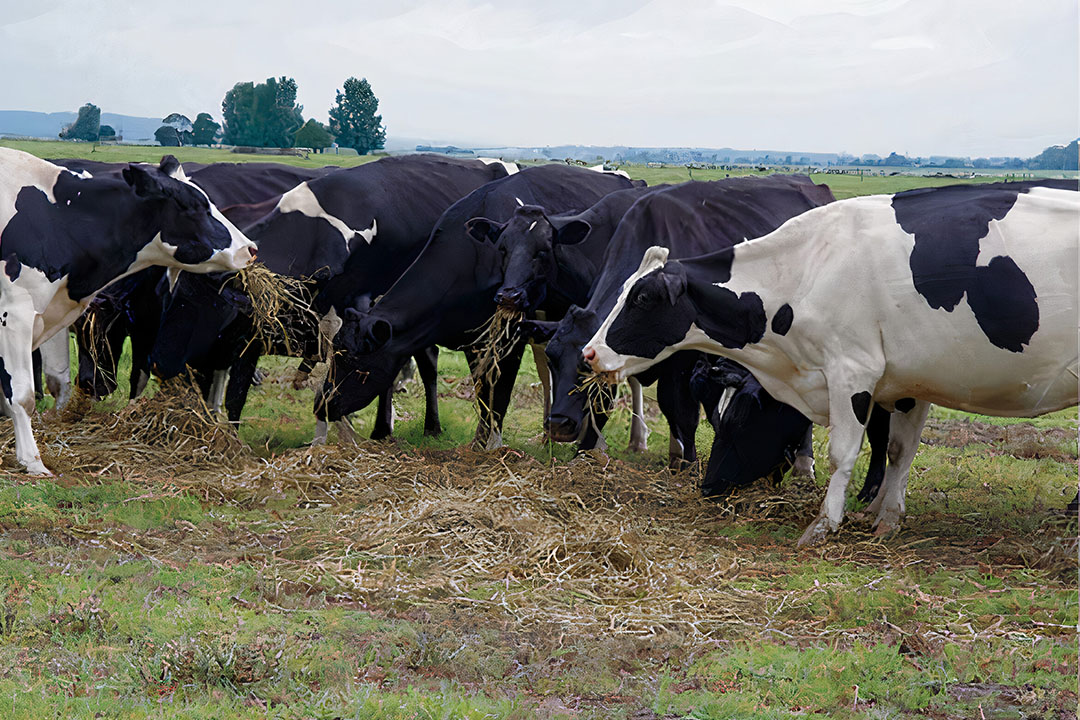
David emphasises that farmers considering OAD milking can also milk at a different time of day. “That could attract another part of the labour market. Milking cows at 6 am in the morning does not appeal to a lot of people. It might suit them better to milk in the middle of the day, for example. This system offers far more flexibility than milking twice a day. It makes the industry more appealing for anyone new coming into it. You can have a pretty normal weekend.”



